https://www.danielmitsui.com/00_pages/current.html

DEAR FRIENDS, PATRONS & BENEFACTORS:
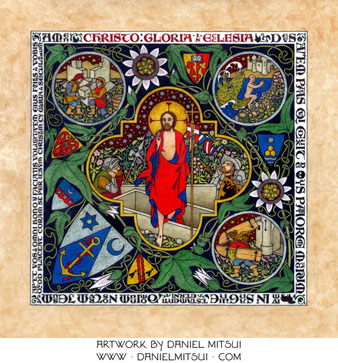
I wish you all a happy Paschaltide.
I am very grateful to everyone who has purchased original artwork since I announced a special sale at the end of February. The hardships that prompted the sale have largely been resolved. If anyone is still interested in obtaining an original drawing from me for a third less than its usual cost, there are more than twenty works yet available. An updated list of them can be found here. The sale will end on April 30th.
Benefits for my supporters on Patreon and the patrons of the Summula Pictoria can be accessed here.
Yours faithfully,
Daniel Mitsui
April 2024
NEW POETRY COLLECTION
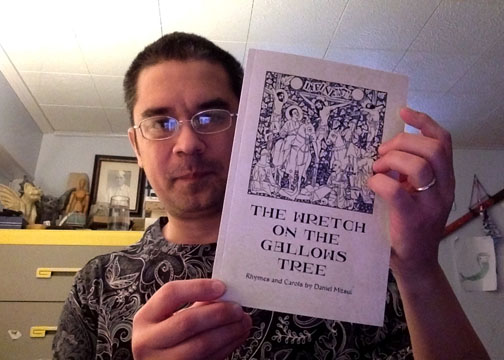
I am delighted to announce that The Wretch on the Gallows Tree: Rhymes and Carols by Daniel Mitsui, my debut collection of poetry, is now available in print.
It includes forty religious poems on the life, death, and resurrection of Jesus Christ, following the sequence of the liturgical year. These poems are written in rhyme, in singable meters, using an archaic diction that suggests the popular verse of the late Middle Ages and early modern period: carols, ballads, folk songs, and hymns. I designed the typefaces, ornament, and occasional illustrations used in the book.
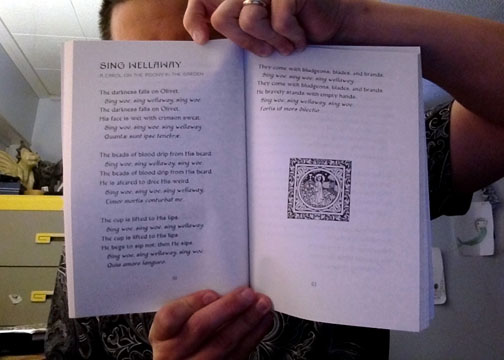
Signed copies can be purchased at my website. It is also available at Amazon. (This is the less costly option for readers outside the United States of America.)
If you read this book and enjoy it, please consider leaving a rating or a review on Amazon or Goodreads.
Here is an excerpt from the book, a carol for the Easter season:
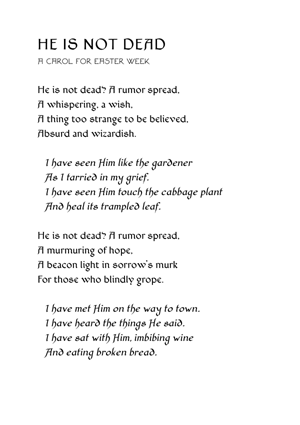
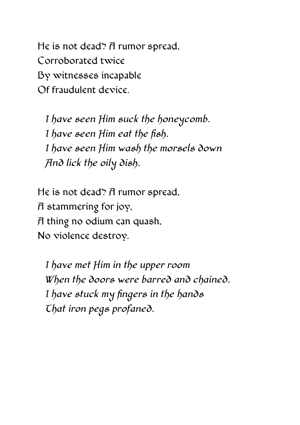
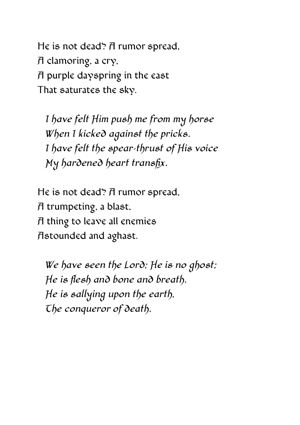
NEW DRAWING: NICHOLAS BLACK ELK, SERVANT of GOD
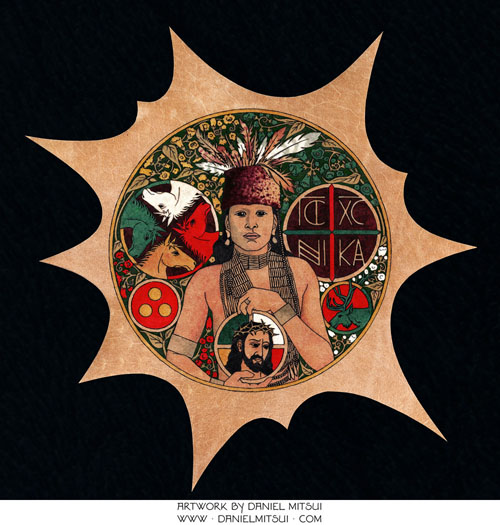
Black Elk was born into an Oglala Lakota family some time in the 1860s. At the age of nine, during a bout of illness, he experienced a great supernatural vision, in which he encountered, among many other things, troops of horses of different colors corresponding to the cardinal directions, a sacred teepee with a rainbow for a door, six grandfathers bearing mystical gifts, a hoop of peoples crossed by red and black roads, and a healing herb bearing flowers in four colors.
He became a highly regarded holy man and healer among his people. Among the many events of his remarkable life, he fought in the Battle of Little Big Horn, toured Europe with Buffalo Bill’s Wild West, participated in the Ghost Dance, and witnessed the massacre at Wounded Knee. During the Ghost Dance, he experienced another vision, in which he saw a messiah with wounded hands standing before a flowering tree.
Black Elk was baptized as a Catholic in 1904, shortly after the death of his first wife. He took the name Nicholas. He fathered six children, three by his first wife and three by his second, all of whom he raised as Catholics. Starting in 1907, he served as a catechist for the Jesuit mission. His duties included preaching, writing pastoral letters, teaching religious instruction, and serving as a spiritual advisor, particularly when the ordained clergy were unavailable. His work helped to lead more than 400 people to baptism.
In my drawing of Black Elk, I chose to portray him as a young man, basing the figure on a photograph taken around 1886. I chose also to make the drawing circular, since he had spoken at length about the symbolic importance of the circle in Lakota thought, lamenting the transition from life in teepees to life in orthogonal buildings. I drew it on an irregularly shaped piece of brown calfskin.
The emblems in the drawing combine imagery from Black Elk’s visions with traditional Catholic symbols. The circle with the four horse heads represents the cardinal directions: red for east, white for north, black for west, and yellow for south. These are also the colors of the Lakota medicine wheel. In earlier illustrations of Black Elk’s visions made by his friend Standing Bear, a dark blue paint was used to represent black; I also have done this. The white color I made by scraping away the top layer of the calfskin. I placed these same four colors in the cruciform halo in the icon of Jesus Christ that Black Elk holds.
The other large circle includes the hoop of peoples, with its red road of goodness running from north to south, and the black road of troubles running from west to east. I combined this emblem with the nomen sacrum of Jesus Christ. The two smaller circles represent Nicholas Black Elk’s two names. The three gold balls on a red background are a traditional symbol of St. Nicholas of Myra. The other contains a literal black elk.
Surrounding the central figure and the emblems, I drew an herb with flowers in four colors: red, yellow, blue and white. This represents the herb of healing that Black Elk saw in his visions, and later discovered.
This drawing was made on private commission. Prints of it are available here.
NEW ESSAYS
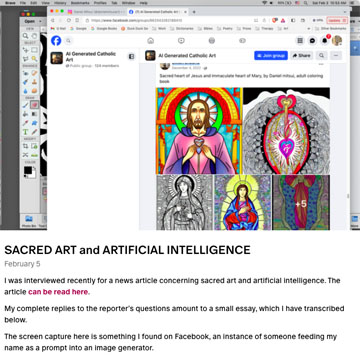
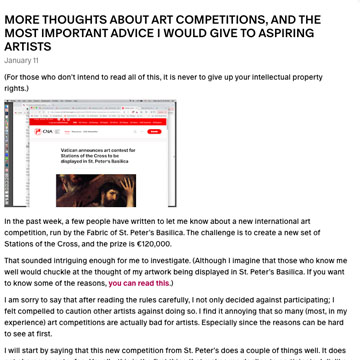
I have written two new essays recently on topics that are important to me, and to many artists: one on artwork generated by so-called artificial intelligence, and one on art competitions and intellectual property rights. These can be read at my Patreon web log.












